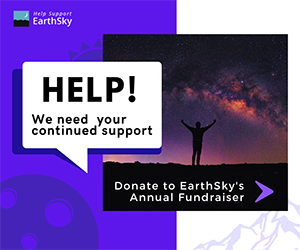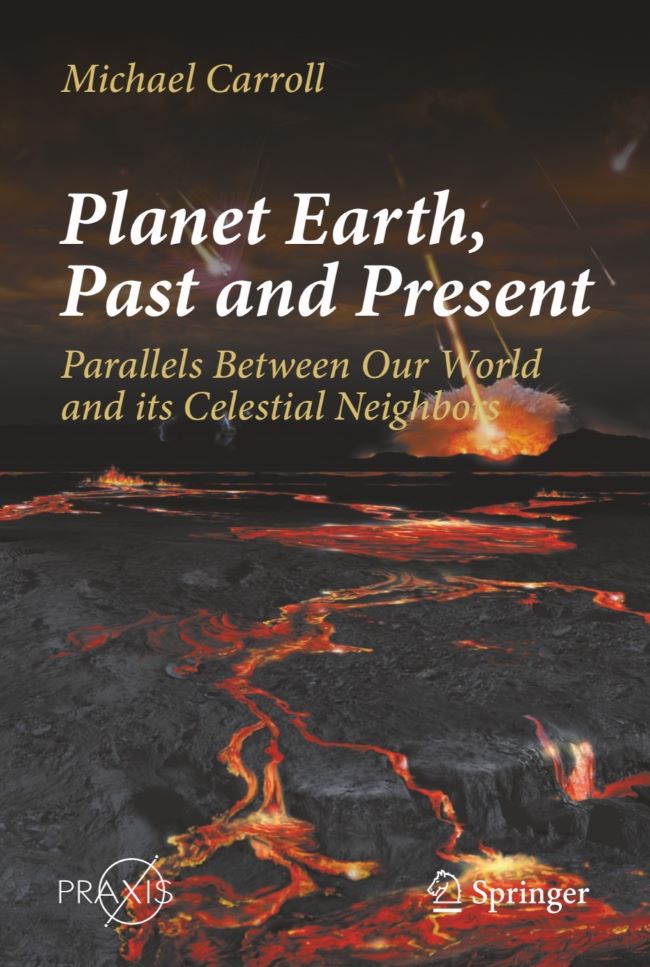
The 2024 lunar calendars are here! Best New Year’s gifts in the universe! Check ’em out here.
Planet Earth, Past and Present
If you’re ready to take a deep dive into Earth’s evolution and habitability and compare it with other worlds, then I have got the book for you. Planet Earth, Past and Present: Parallels Between Our World and its Celestial Neighbors by Michael Carroll is a thorough examination using the latest scientific information and incredible artwork by the author. Each chapter compares Earth to other worlds, from the asteroid belt to Venus, Mars, Titan and even exoplanets.
The book begins by putting us in our place. Carroll describes Earth’s place in the Milky Way galaxy:
Our location in the galaxy is significant, as it appears that – like planetary systems – galaxies have habitable zones.
An astonishing 95% of the Milky Way’s suns may not be able to sustain habitable planets, because many orbit the galaxy in paths that carry them through the deadly spiral arms. Any star that passes through one of these starry swarms is subject to deadly radiation from the congested stars. Our own solar system orbits far enough from the center to keep it in sync with the rotation of the rest of the galaxy, so that it remains in the quieter space between the spiral arms. The Earth and its planetary siblings are well placed in a quiet, resource-rich niche of a vast and complex galaxy.
A special place in our solar system
Earth is not only in a special place in our galaxy, explains Carroll, but also a special place in our solar system. These areas that we call habitable zones might be surprisingly narrow, at least for life as we know it. Carroll describes work by the astrophysicist Michael Hart in the 1970s. He says:
Astrophysicists have been able to demonstrate that had the Earth formed only 5% closer to the sun, our planet would have experienced a runaway greenhouse effect, making us more of a twin to Venus than we already are. Had our planet arisen a scant 1% farther away, Earth would have suffered a runaway glaciation, with the surface and oceans freezing over in a permanent snowball Earth condition. Hart’s models indicate that both of these situations – frozen or baked – are irreversible.
Carroll’s illustrations
Carroll is well-known for his amazing illustrations of astronomical worlds and events, and with good reason. His images help us better picture things we’ll never get to see and capture scenes and moments that we wish we could experience. The book is rich with his illustrations along with images from NASA and other illustrators.
Below is an illustration showing the moments before a cataclysmic event that scientists believe produced our moon. A giant rocky body, named Theia, crashed into the early Earth, stripping off part of our planet and fracturing Theia. The debris eventually coalesced into what we know as our present-day moon.
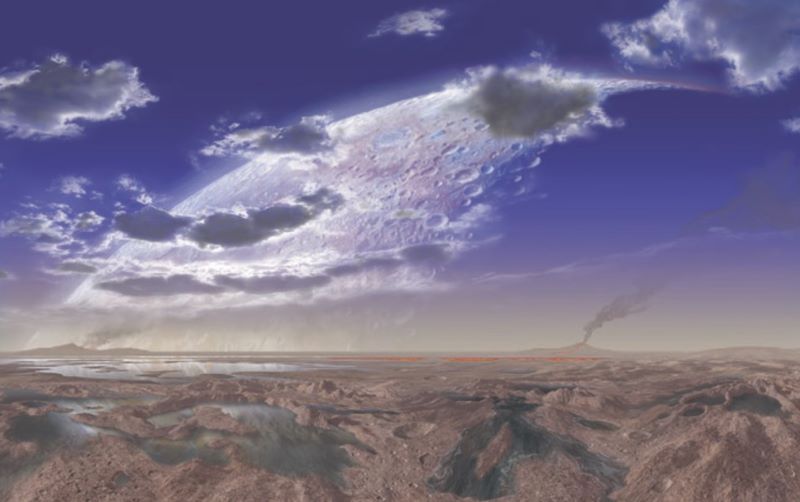
In this next illustration, Carroll depicts early Earth, before the Great Oxygenation Event, when concentrations of oxygen rose in our atmosphere and oceans.
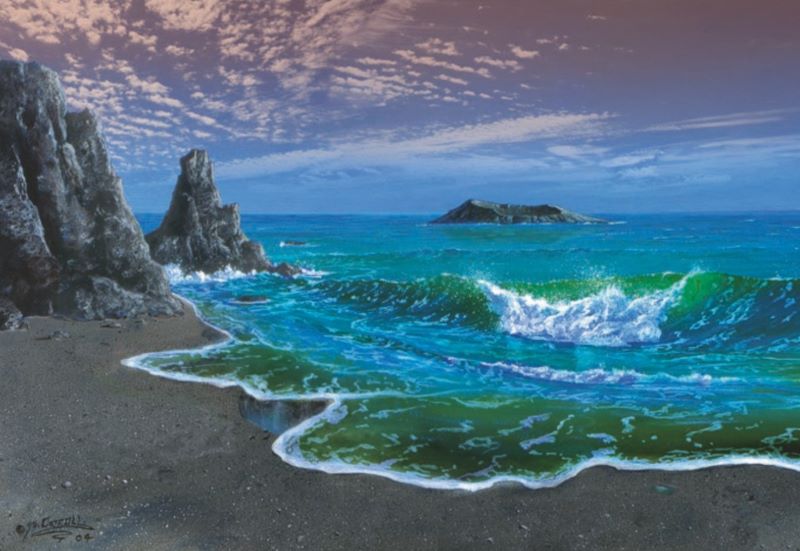
In the book, we also get a peek at early Earth while it was largely covered with ice and snow and before the moon was covered with all the craters we now recognize.
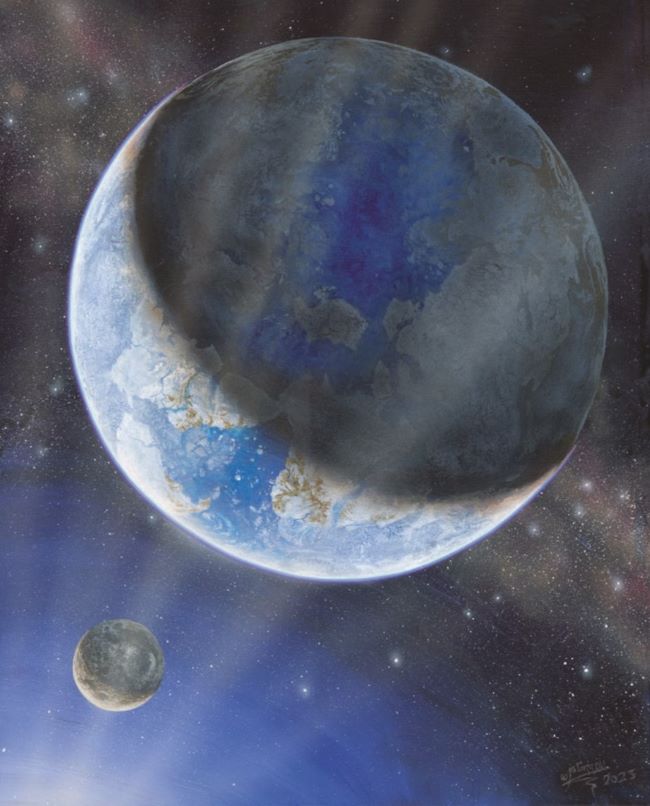
Bottom line: Learn about Michael Carroll’s book Planet Earth, Past and Present. The richly illustrated book looks at history, habitability, our solar system and more.





